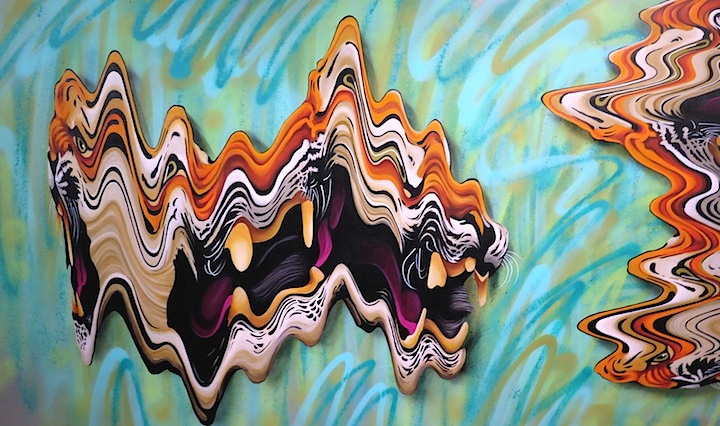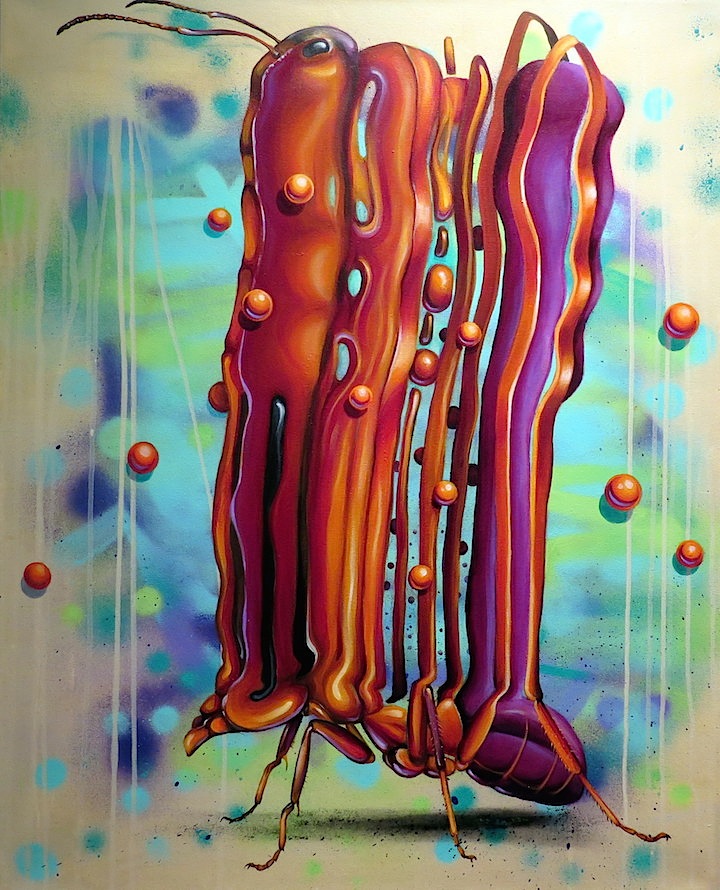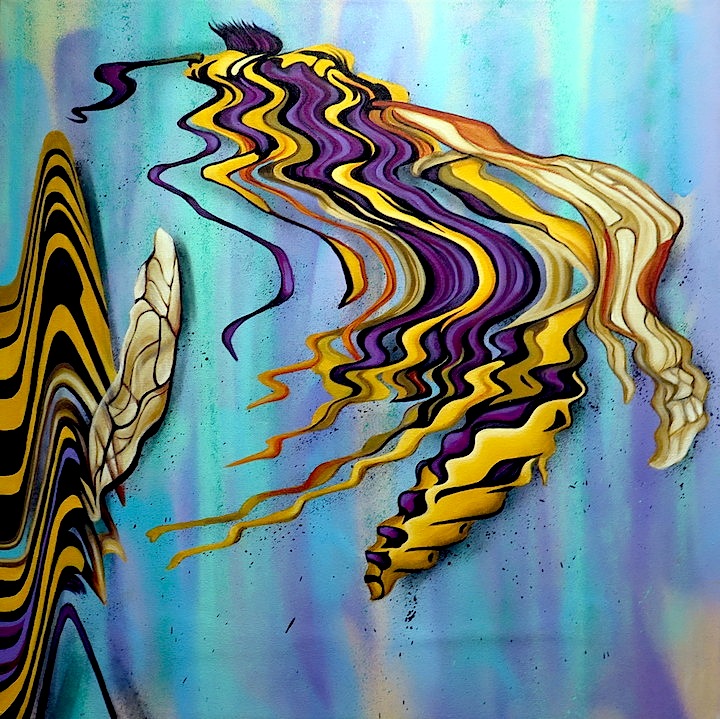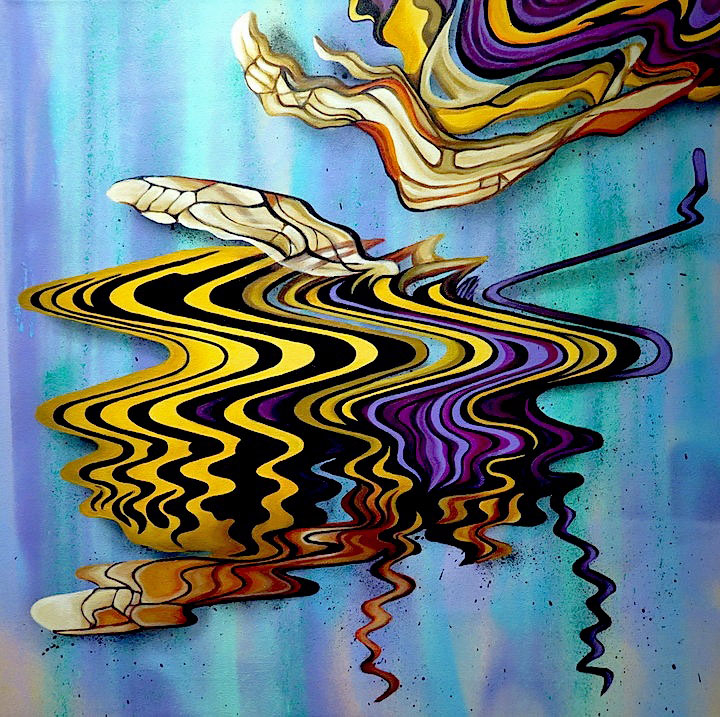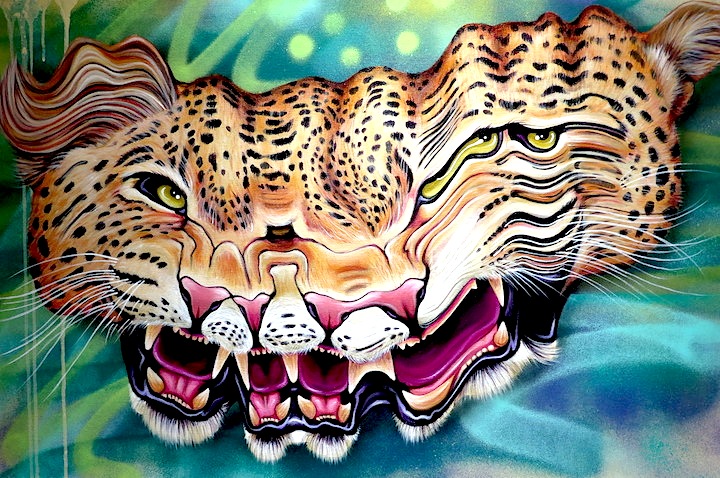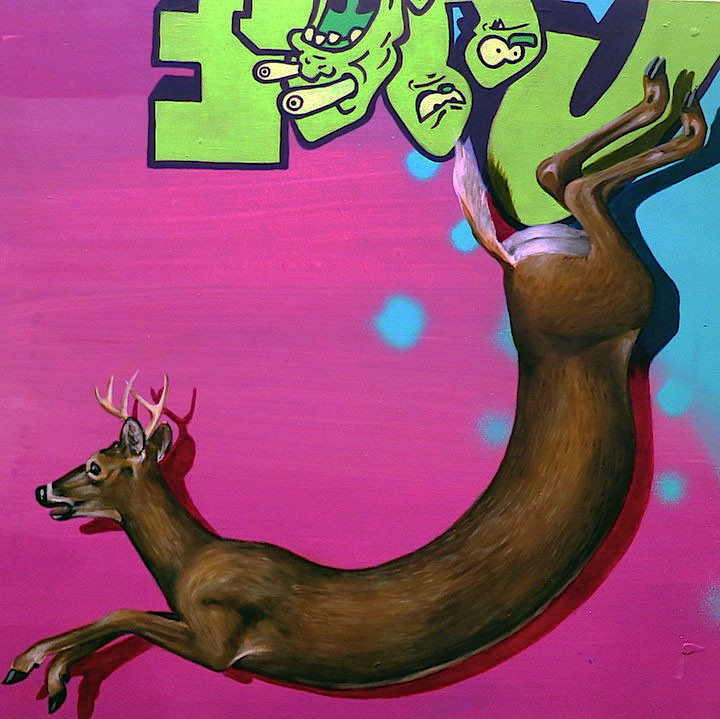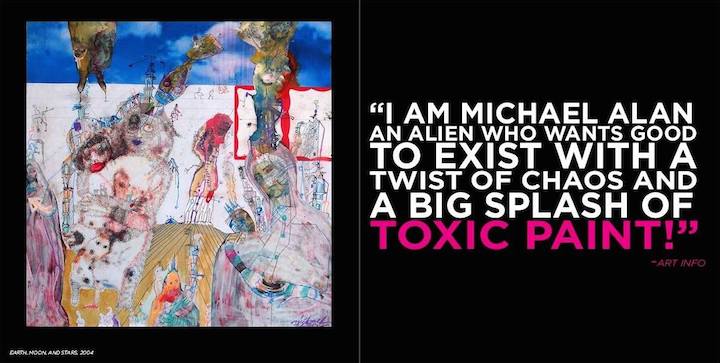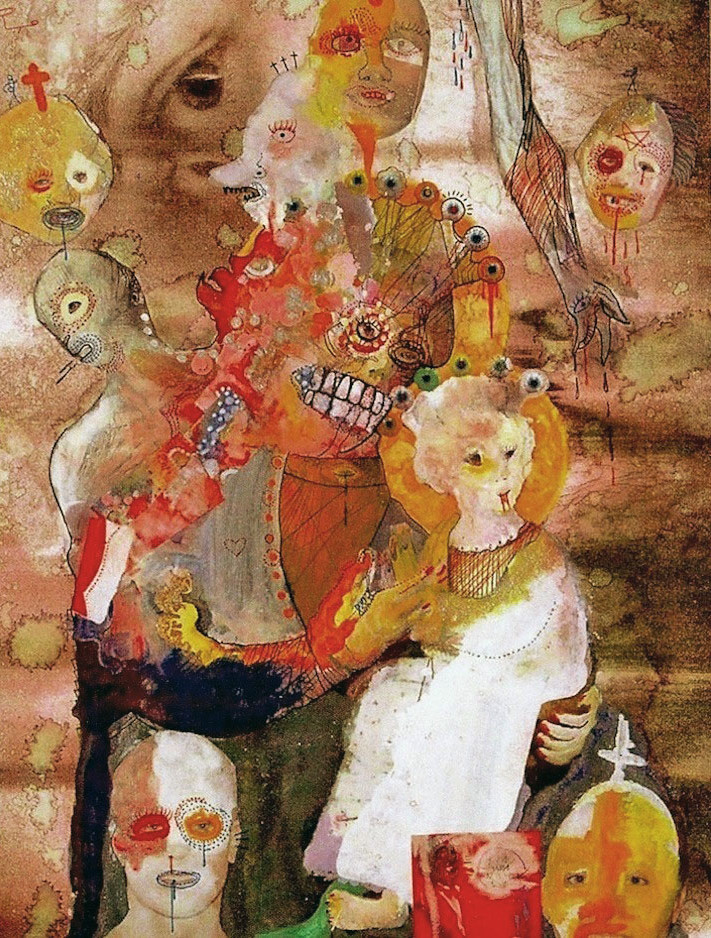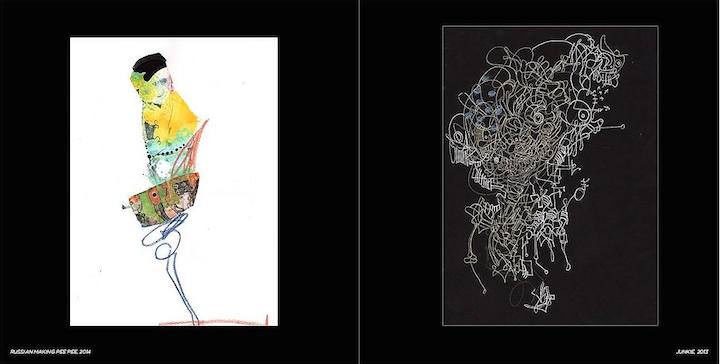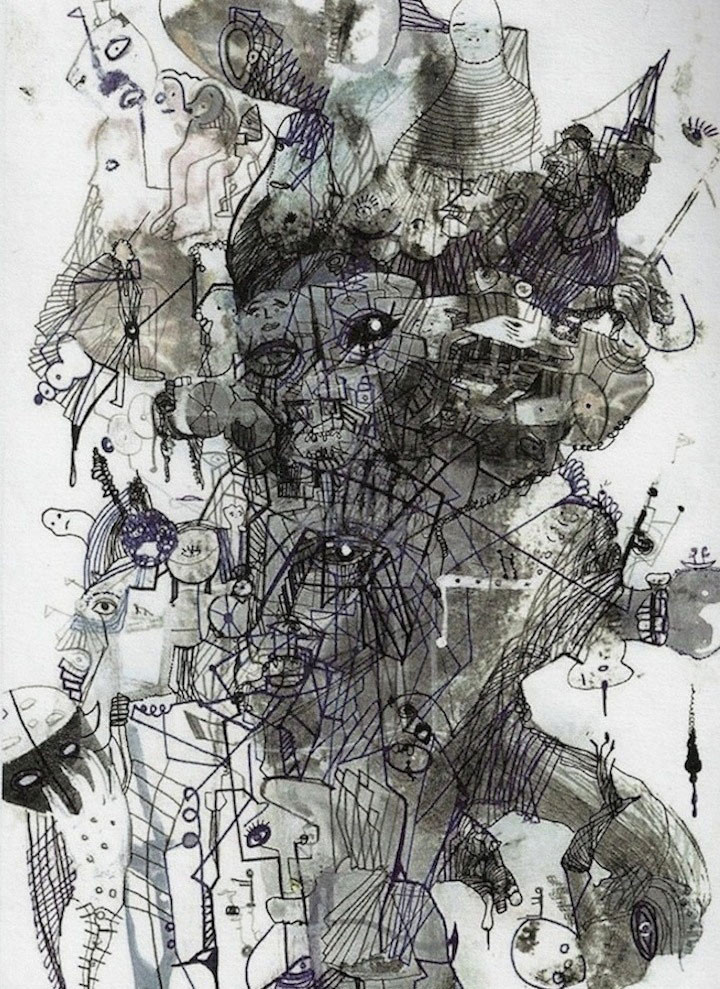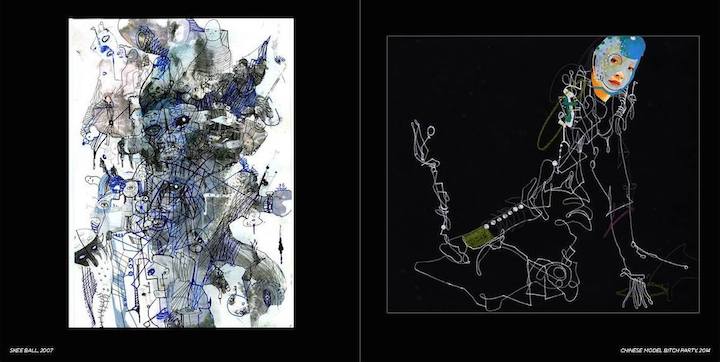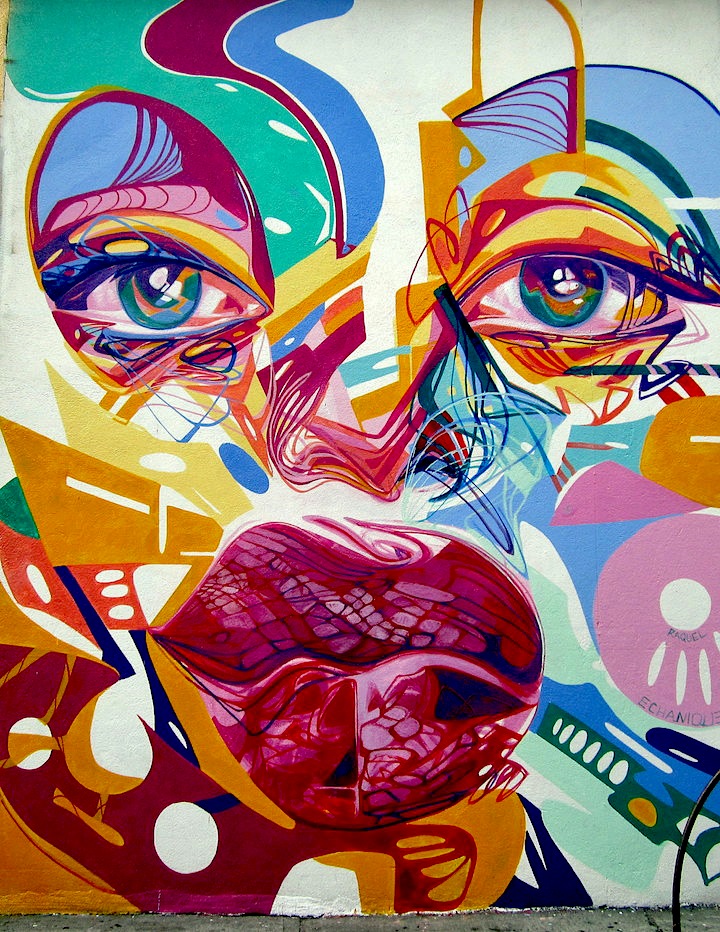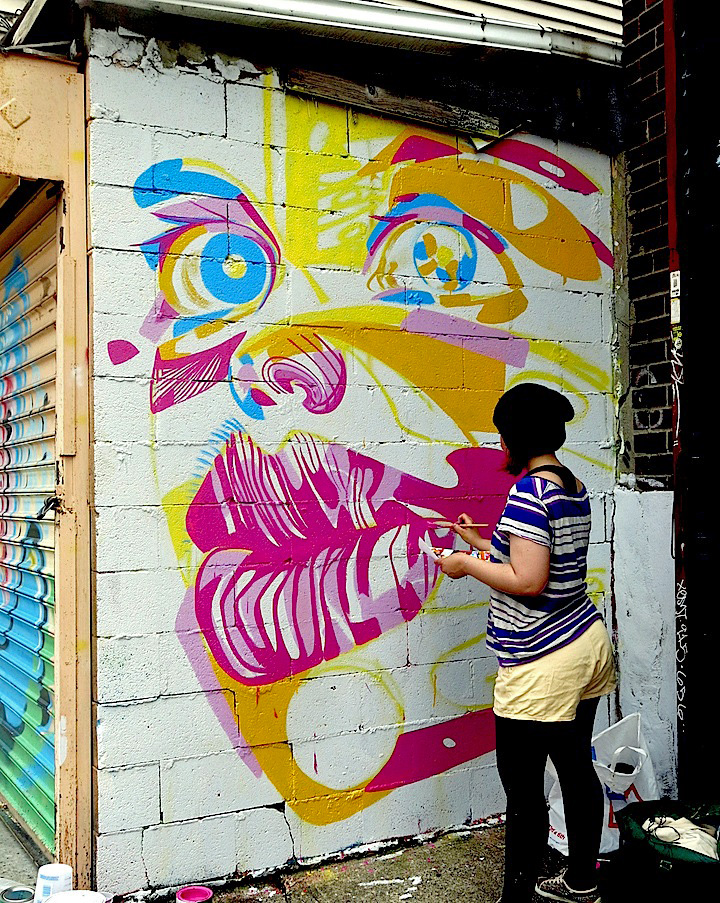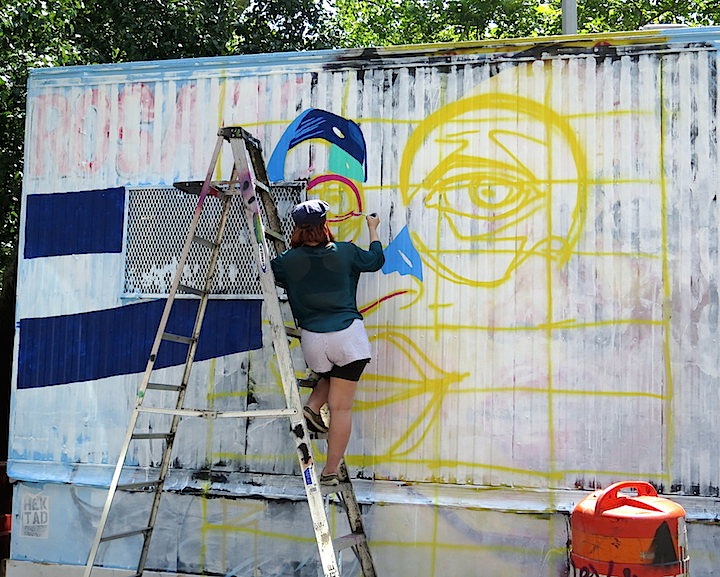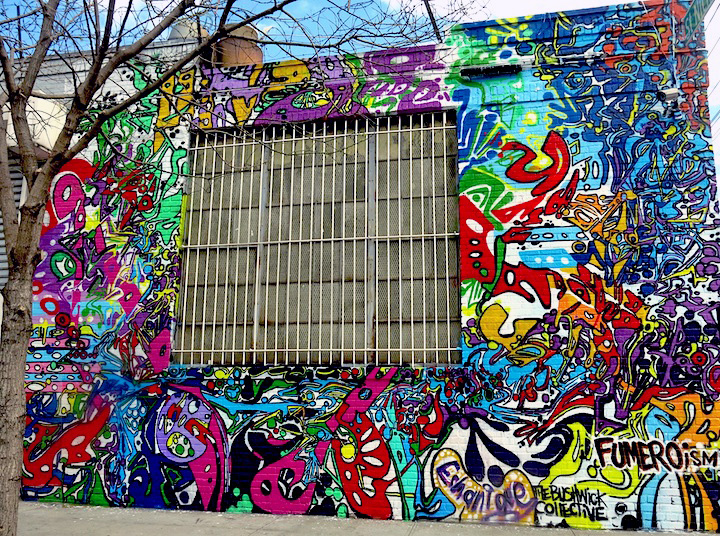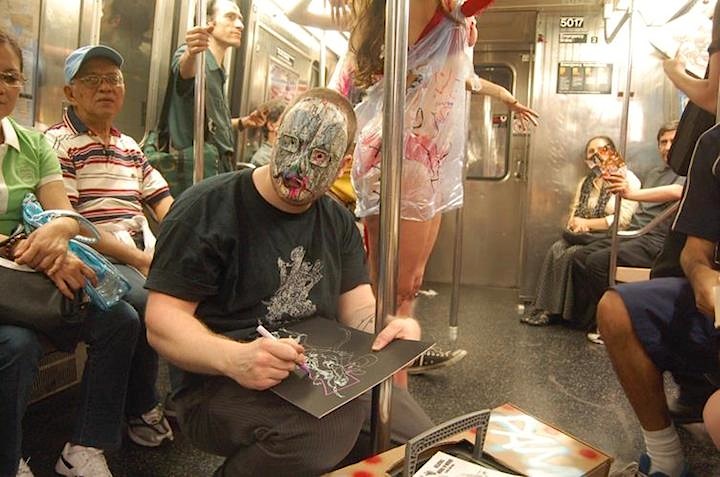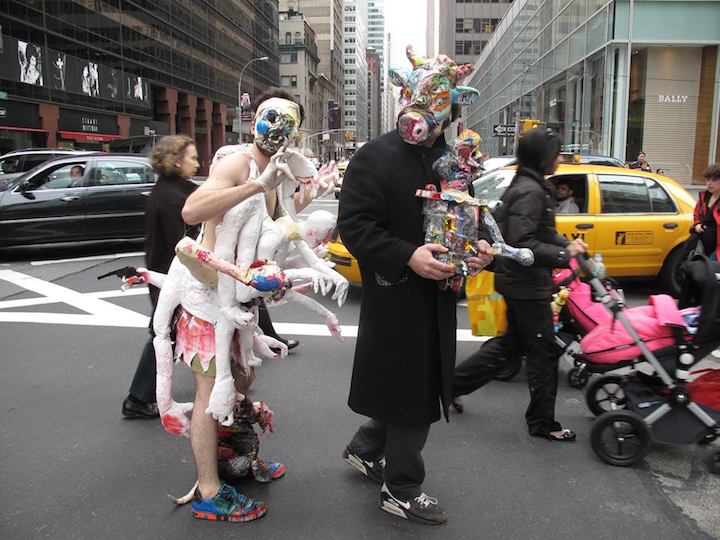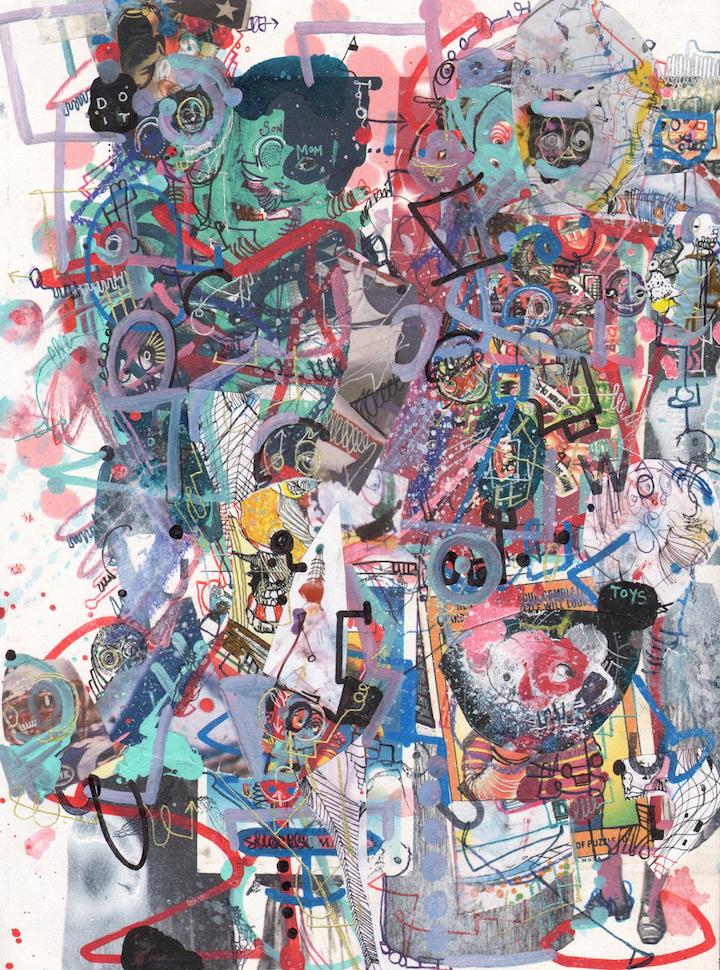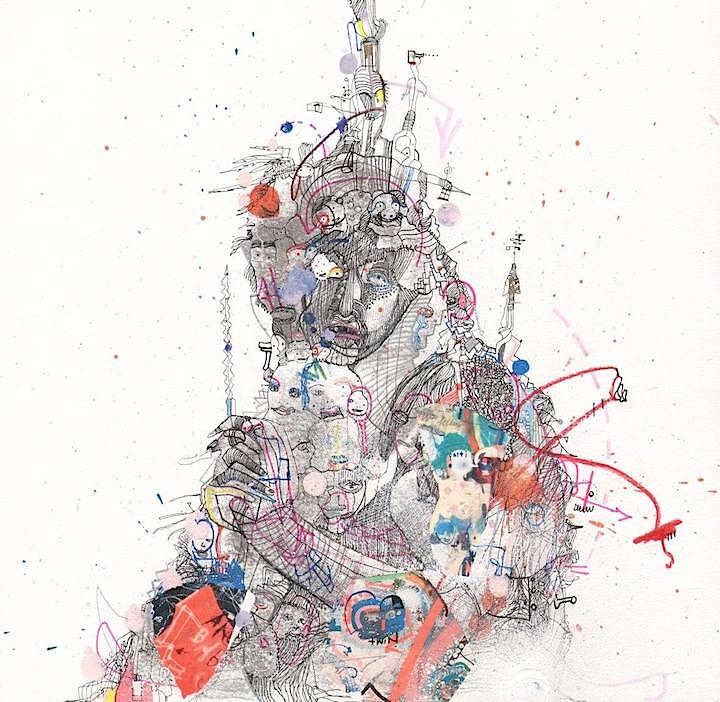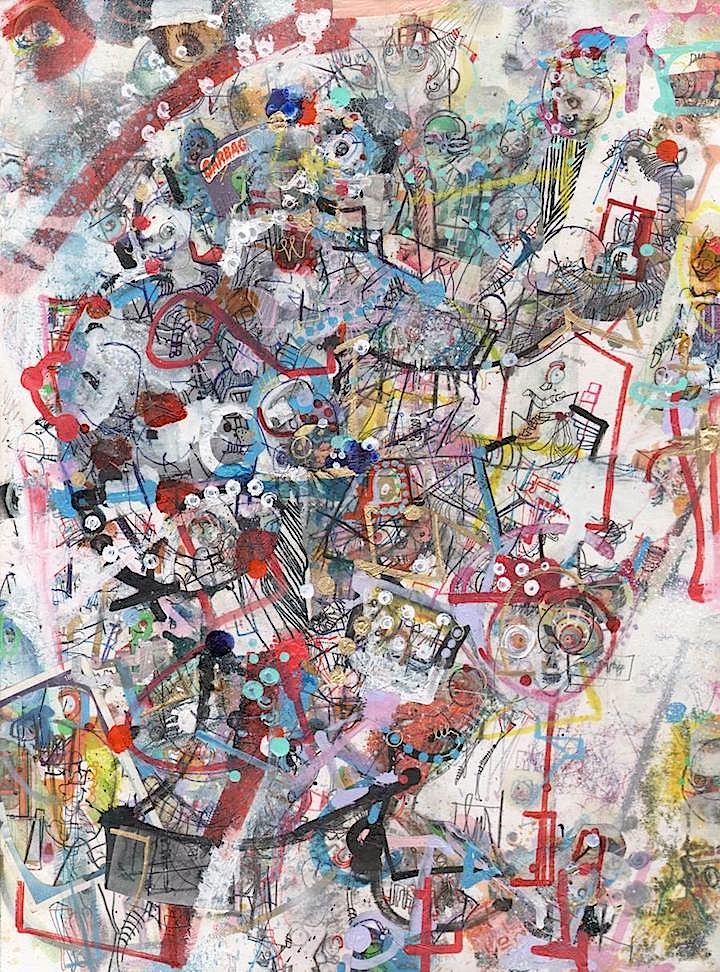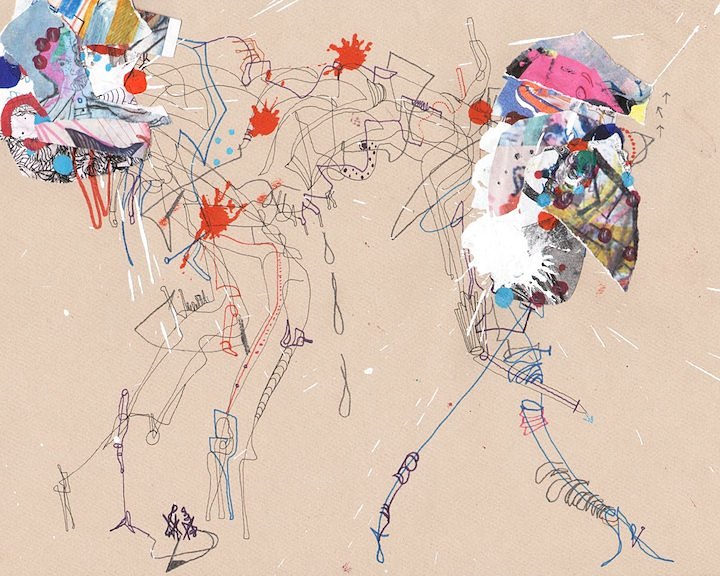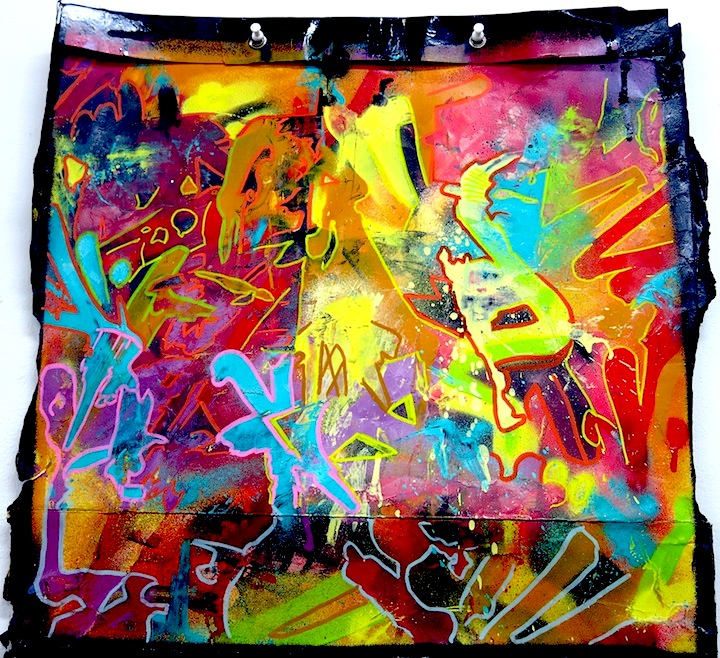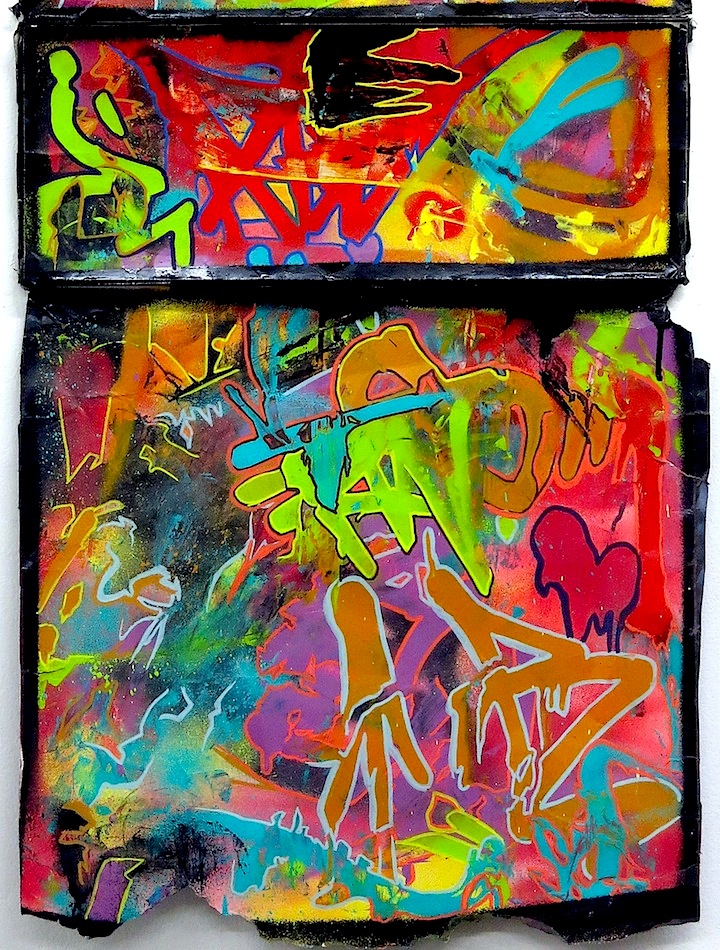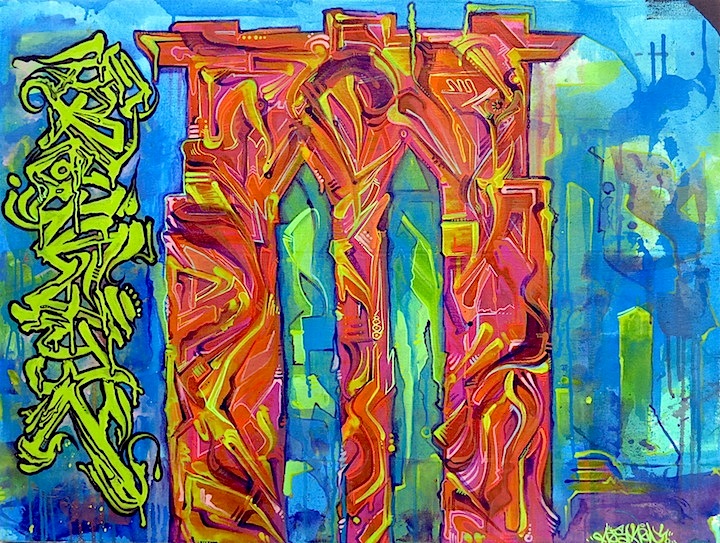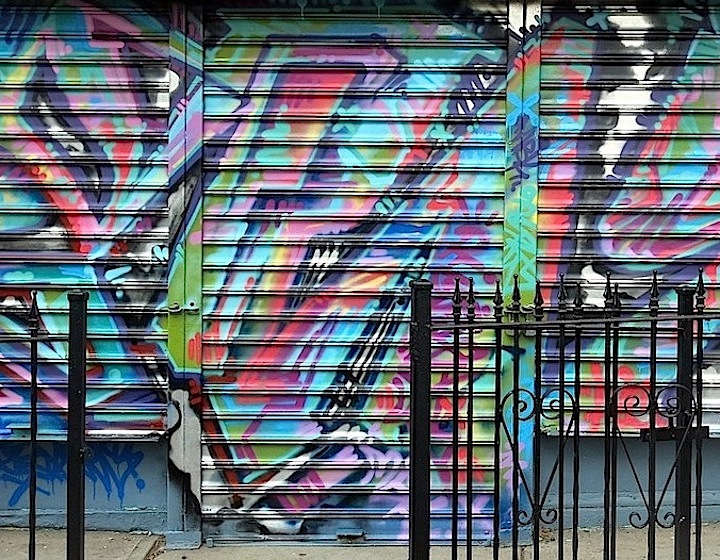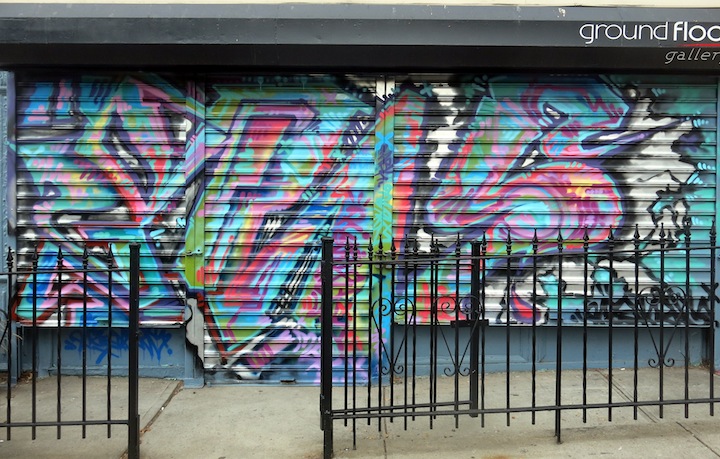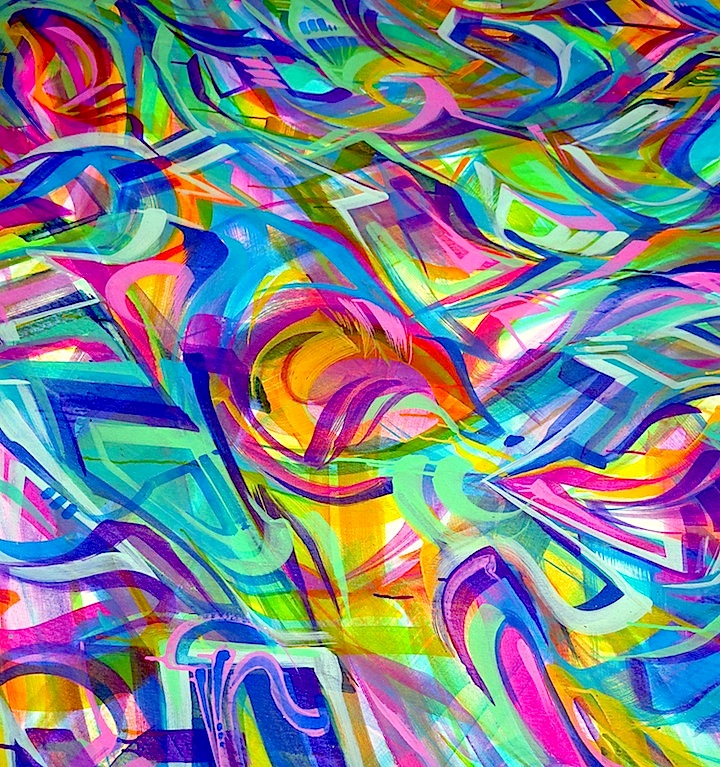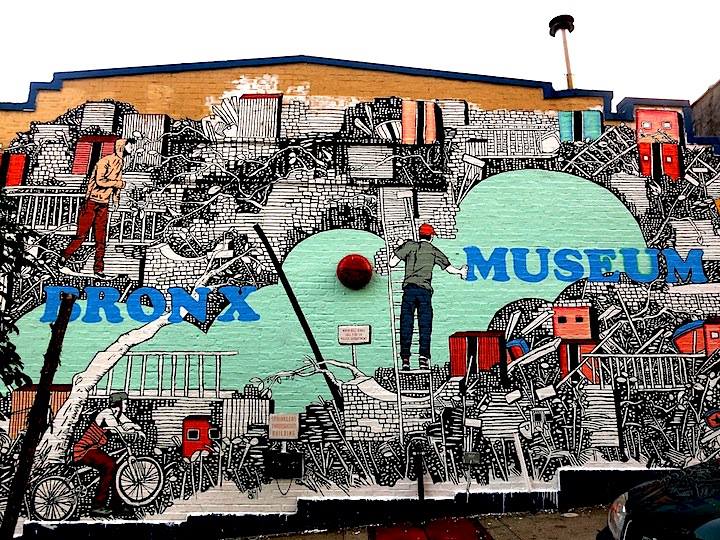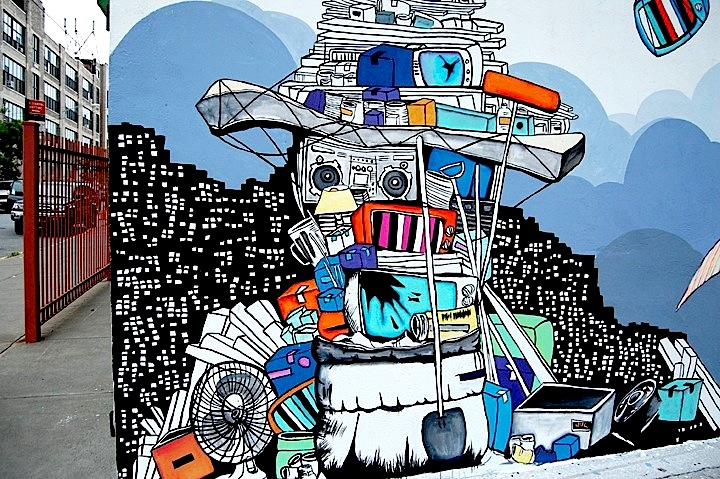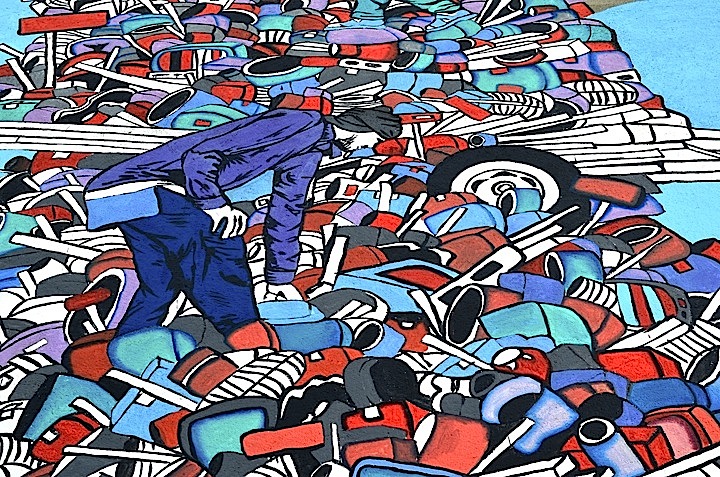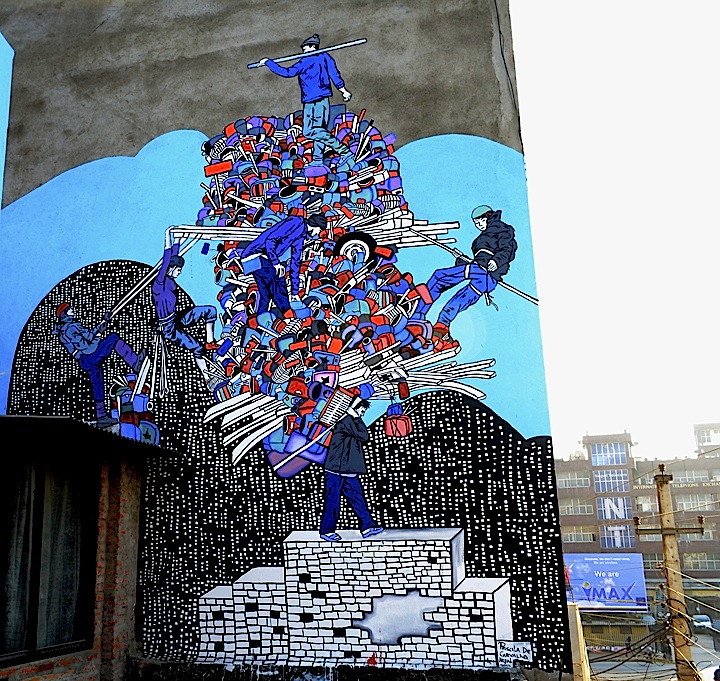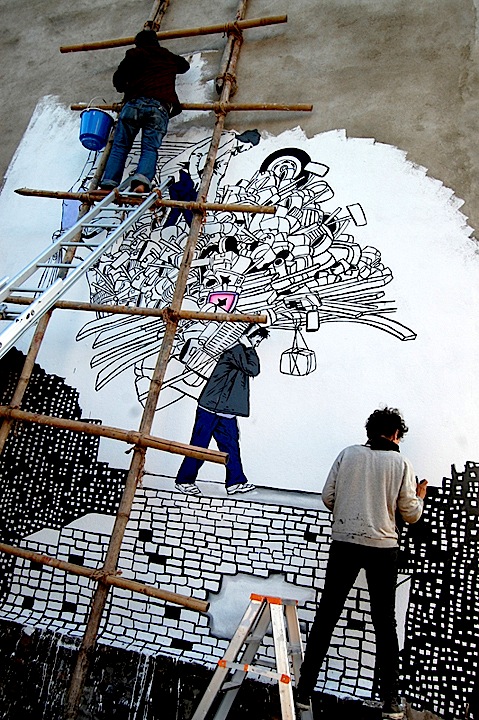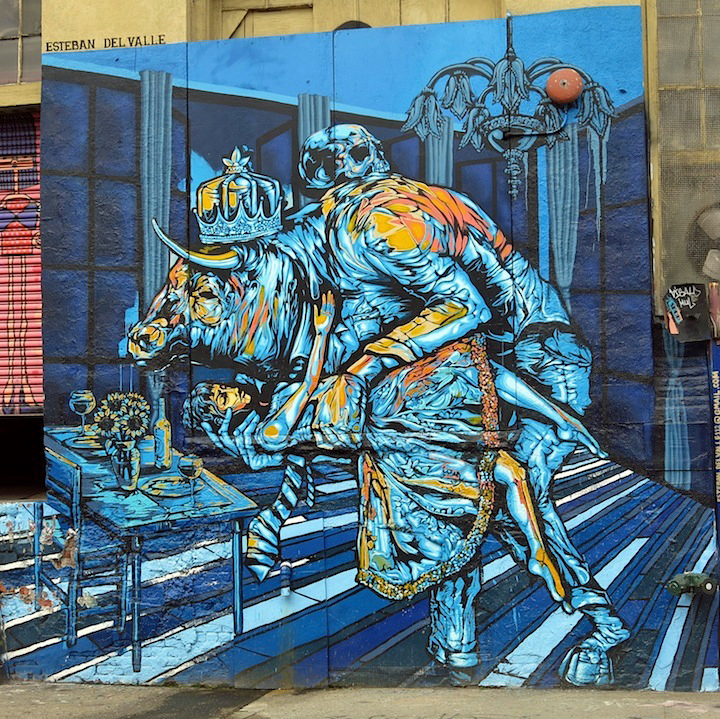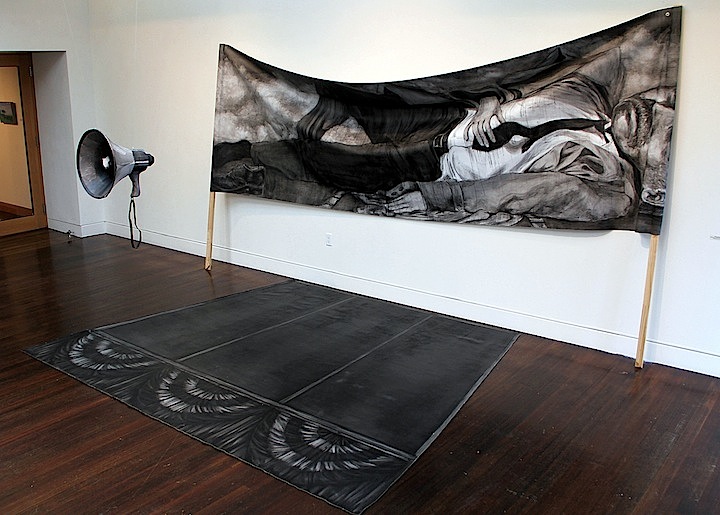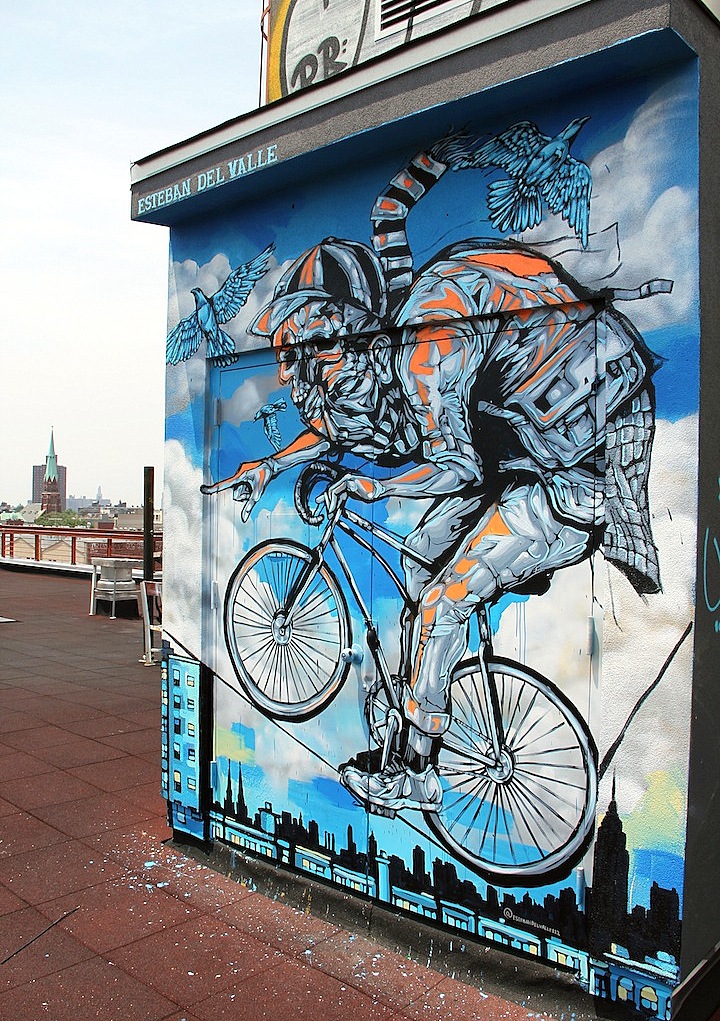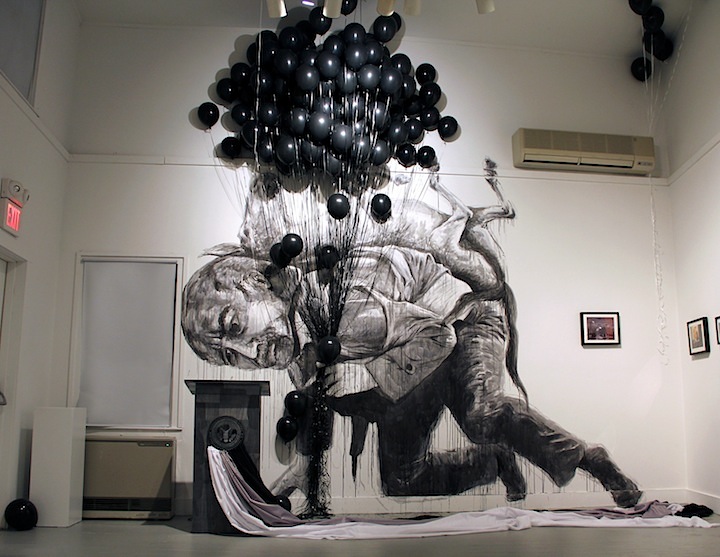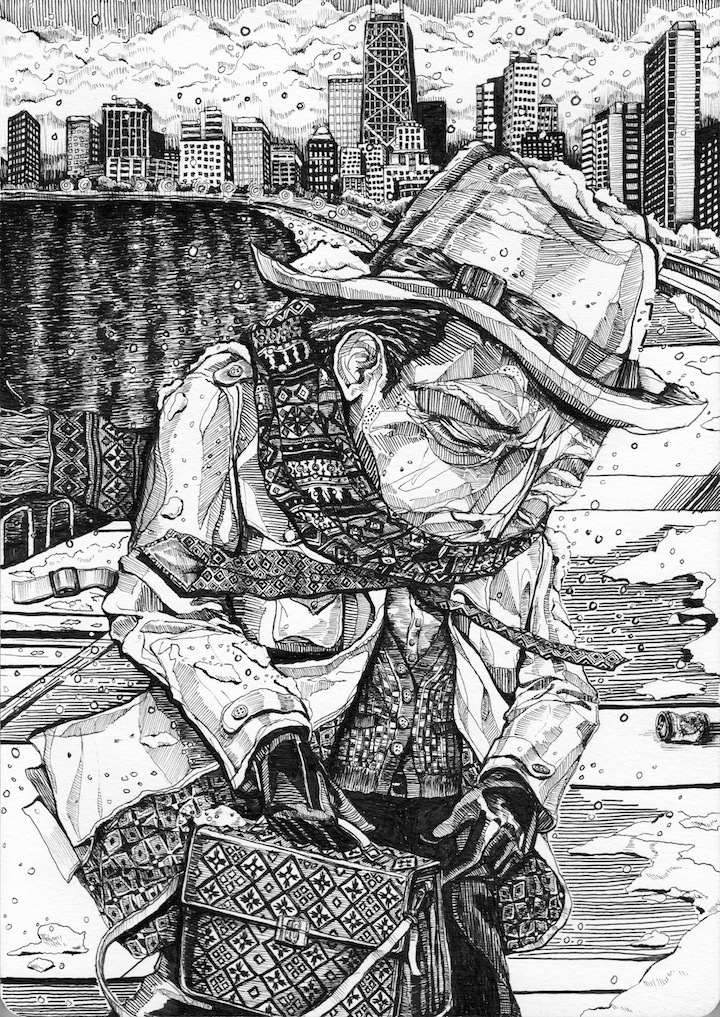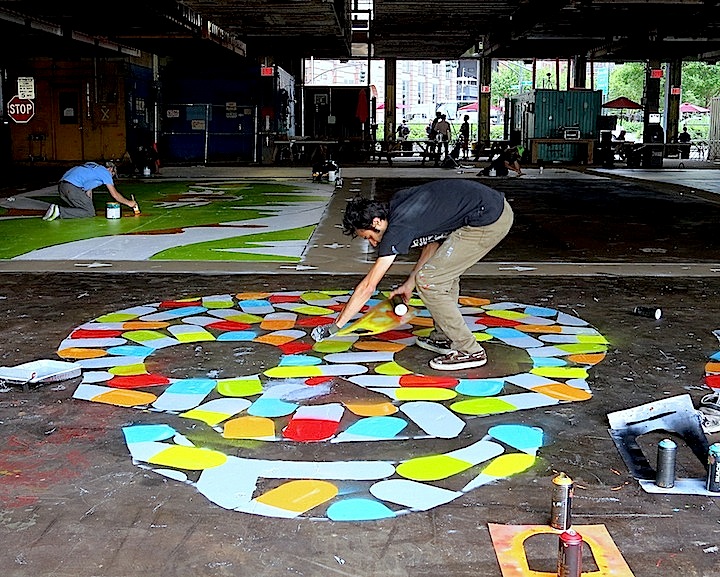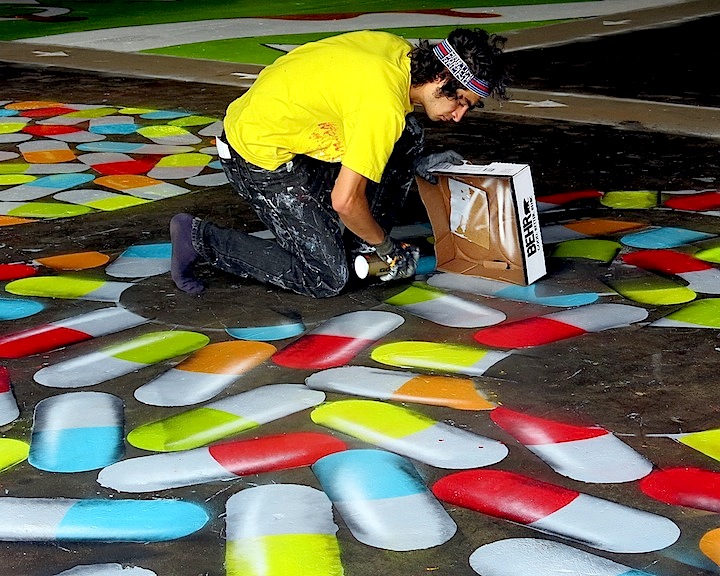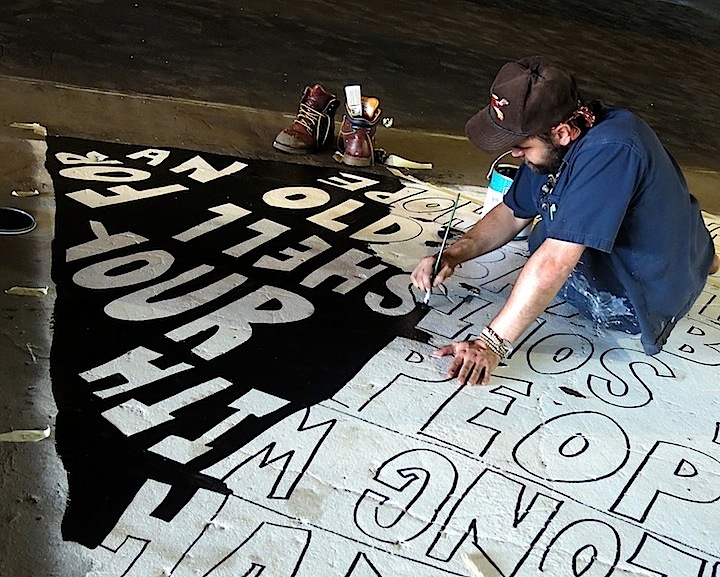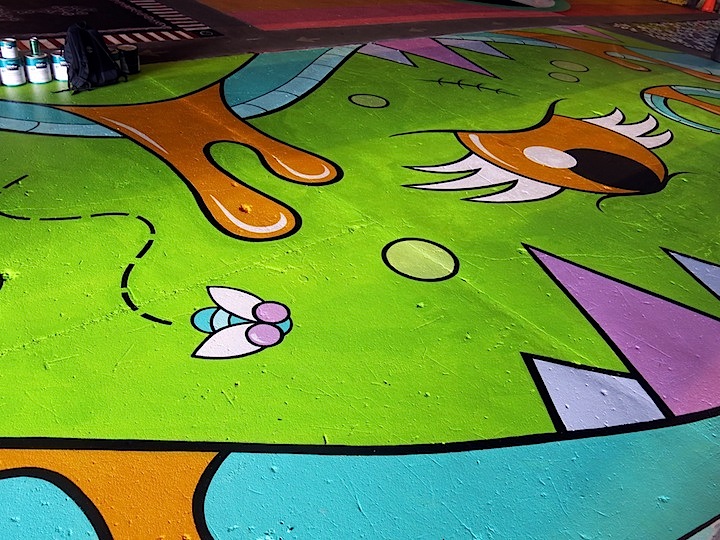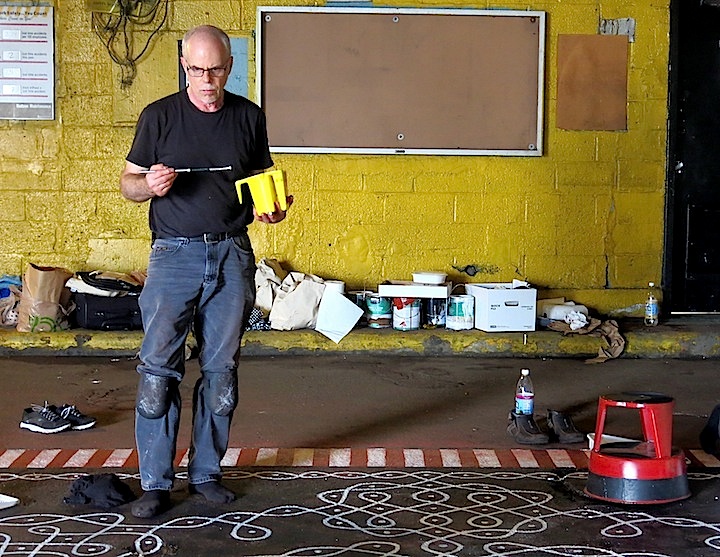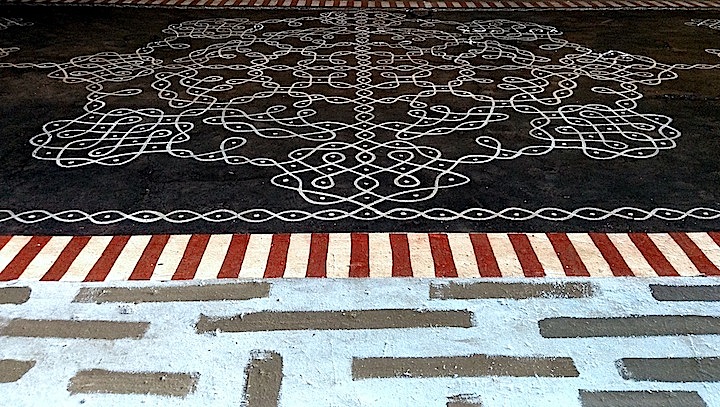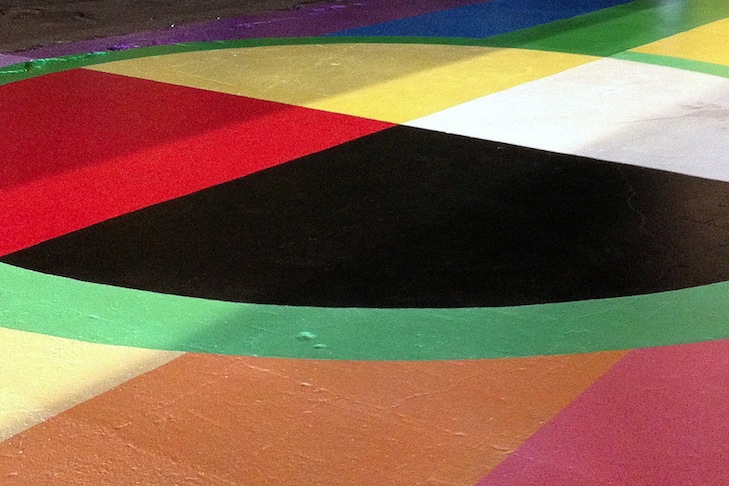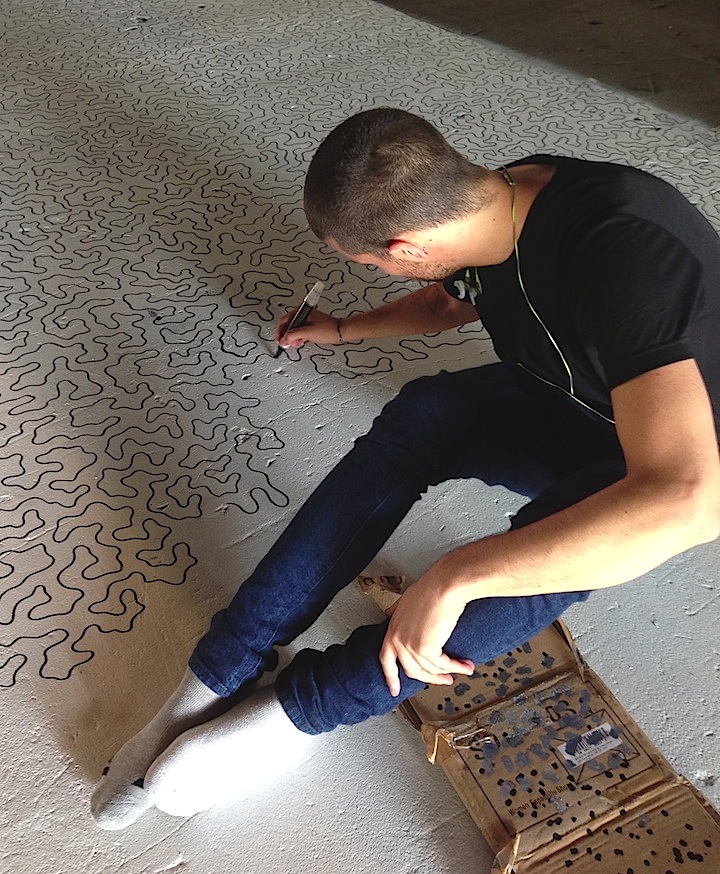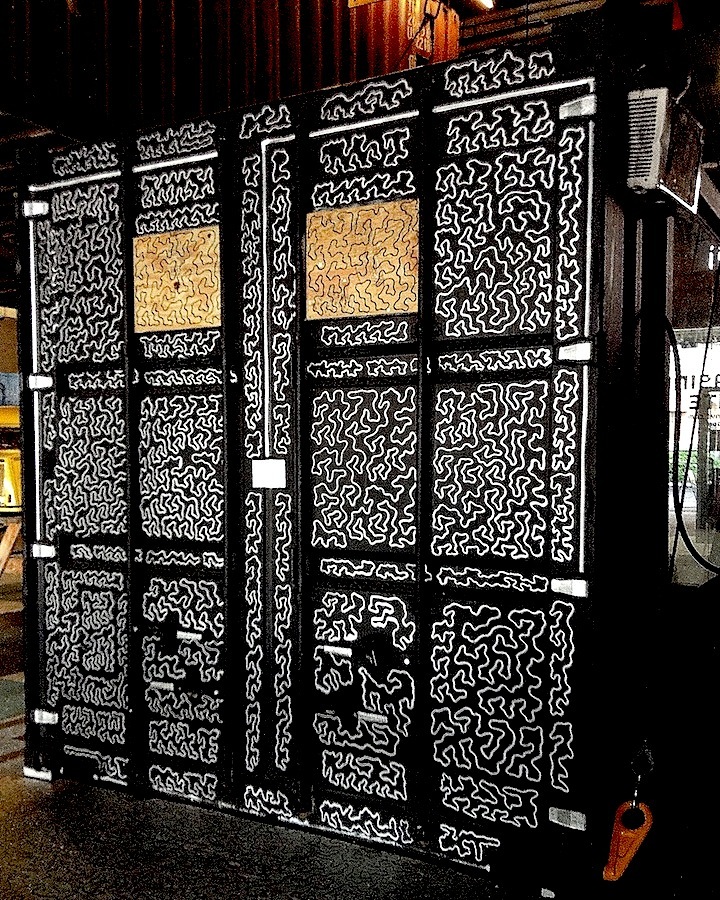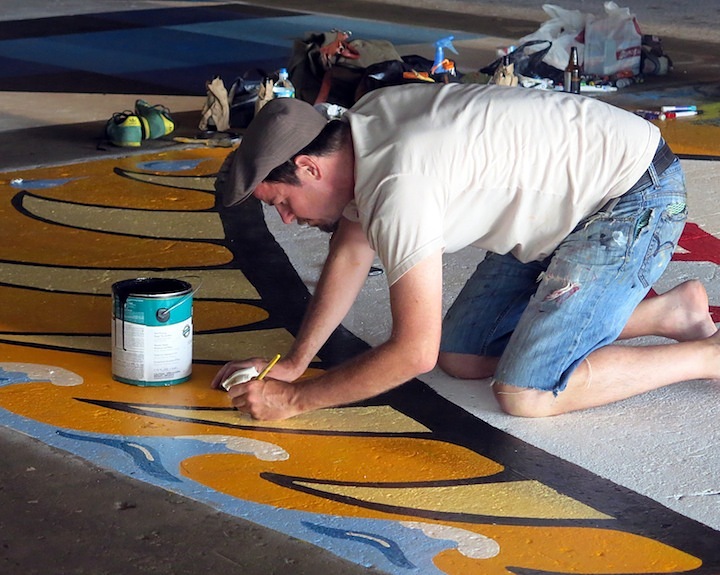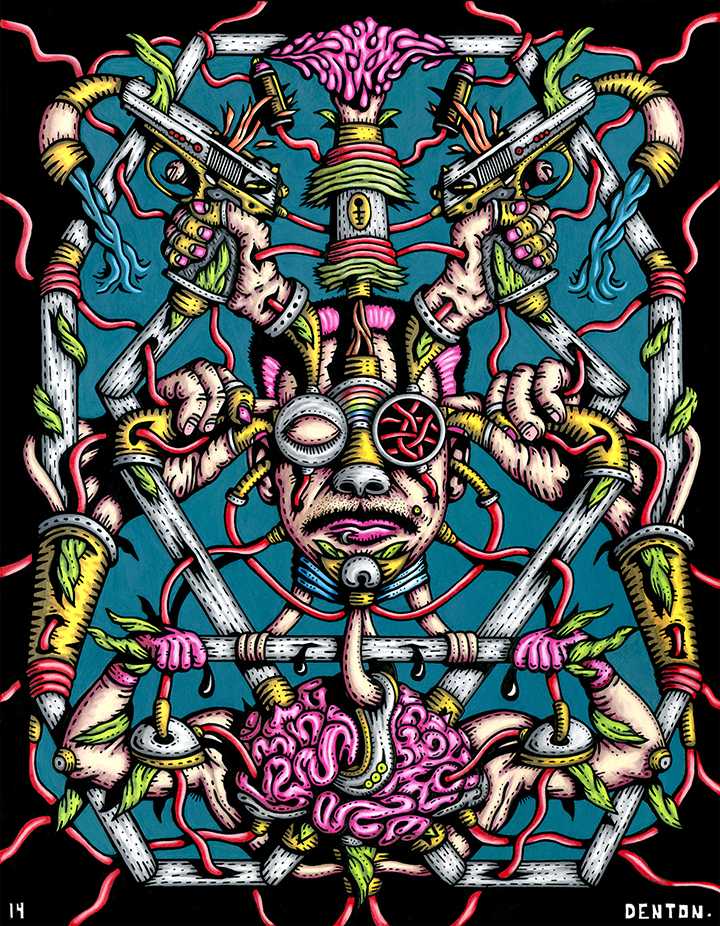
A wonderfully talented fine artist and illustrator, Matthew Denton Burrows began sharing his distinct vision with us on public spaces in January 2013. We recently had the opportunity to interview Matthew whose first solo exhibit opens tomorrow at 8pm at Greenpoint Gallery.
We first discovered you over at East First Street when you were painting for the Centre-fuge Public Art Project. Can you tell us something about that? How did it come about?
When I was in grad school at SVA, I was the only one in my program who was into street art. I loved the concept of sharing one’s art in a public space. And one of my professors who knew about Centre-fuge suggested I contact the folks running it. And so I applied, and in February 2013, I painted my first public piece on a huge trailer off First Street.
What was that experience like?
It was nerve-wracking! I generally work with pen and ink and colored pencils on paper in my studio. It was a new experience, and strangers were observing me at work over the course of five days. But I was instantly hooked! The interaction with the community was addictive!
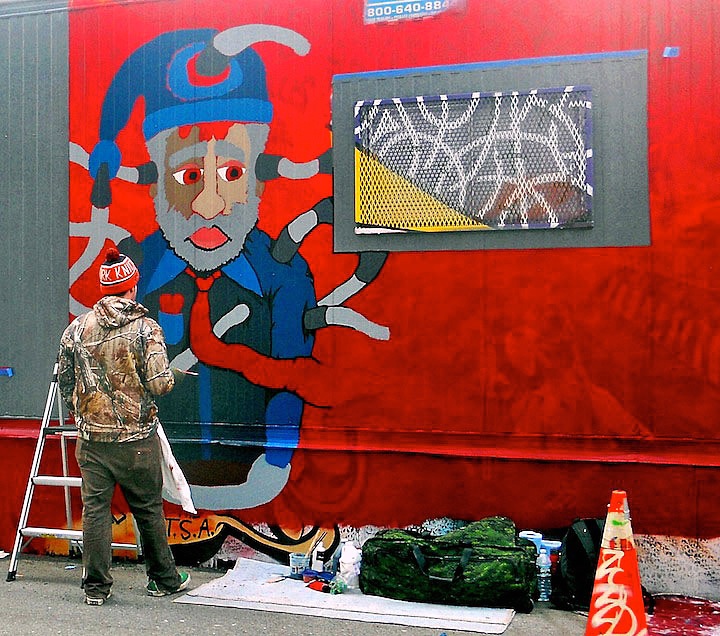
We’ve since seen your artwork elsewhere.
Yes, I’ve painted in Bushwick, at the Northside Festival in Williamsburg and in Miami.
Your artworks on paper are quite different from what we’ve seen on the streets. They’re intricately detailed and extraordinarily complex, both visually and conceptually. When did you first begin drawing?
I’ve always been drawing! When I was in elementary school, I used to get into trouble for drawing so many people with guns!
You work just about full-time as an artist these days. At what point did you decide that you wanted art as a profession? And are you happy with that decision?
At the end of my sophomore year at Lehigh University, I decided to major in art. And, yes, I’m definitely happy with that decision. I love what I do, and I’ve sold a substantial amount of work.
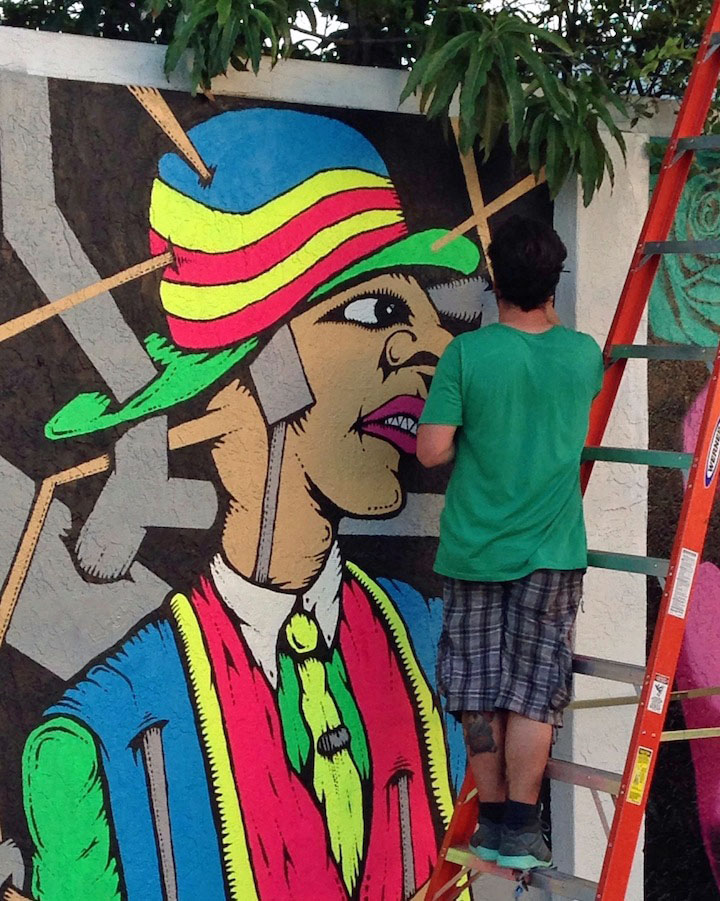
You’ve had a formal art education. Can you tell us something about it? And was it worthwhile?
I received a BFA from Lehigh University, where I had the school’s first-ever solo art show just a year into my degree. Back in New York City, I earned an MFA in Illustration at the School of Visual Arts. My formal education is worthwhile only because I was first self-taught.
How do your parents feel about what you are doing these days?
They’re very supportive. My mom is an artist and she loves street art!
What percentage of your time is devoted to art?
All of it! When I’m not creating my own art, I work as project manager and assistant curator of the Centre-fuge Public Art Project. And I am also the CEO and co-founder of the recently launched company, Dripped on Productions.
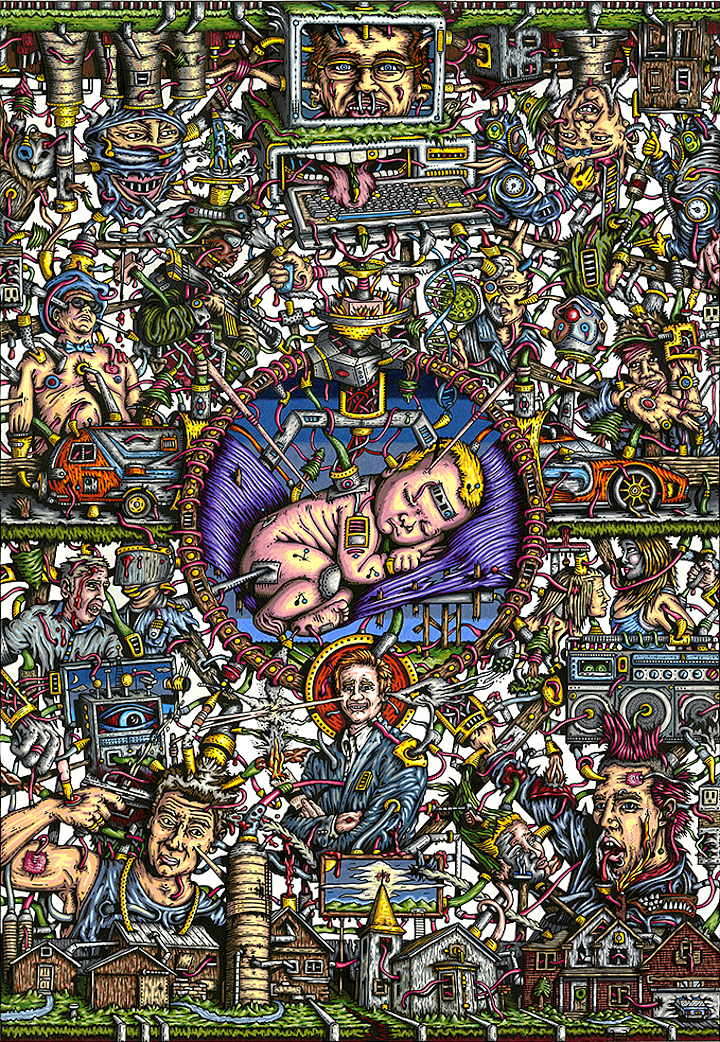
Has your aesthetic been influenced by any particular cultures?
A multitude of cultures, particularly marginal ones.
What inspires you these days – both in the studio and on the streets?
I’m always inspired by the energy of my native city, NYC! But current events, my experiences, my travels, and alternative cultures also fuel my creativity. And I’m an avid reader. When I read that Rio had won the bid for the Olympics, and the World Cup, for example, I did extensive research that evolved into a body of artwork.
What are some of the particular issues that concern you?
I’m especially interested in matters related to the environment, social inequality and the impact of technology.
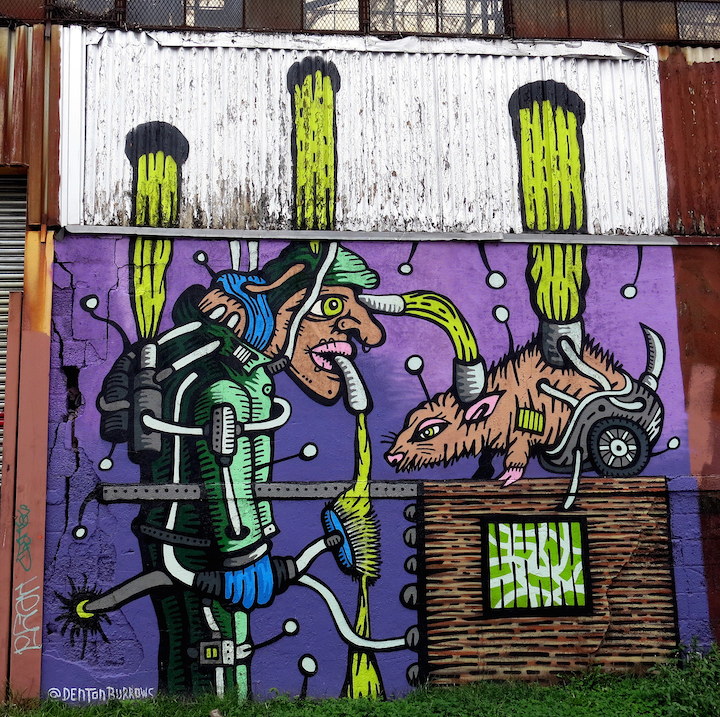
How, then, do you feel about the increased link between art, particularly street art, and corporate or for-profit enterprises?
I think the link, which seems to be growing stronger, is a positive thing. I think it will help enhance the movement in terms of fans, but there is always a danger when a pure artistic expression — such as street art — binds with the corporate world. The corporate world has the ability to suck the creative purity out of things. But artists need to be paid like anyone else, and if an artist can find a link where they still feel integrity and creative freedom, I would support it.
How has your work evolved in the past few years?
I feel that I’m influenced more and more by street art.
Have you ever collaborated with another artist?
No! But I’d really like to.
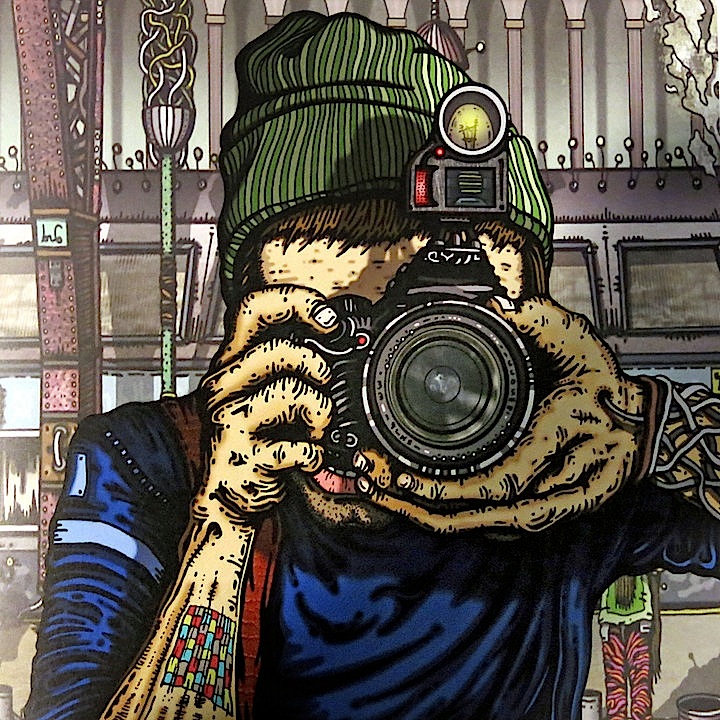
Do you work with a sketch in hand?
No. I have a general idea of what I want to do and my work evolves organically.
What do you see as the role of the artist in society?
To expose others to a more interesting world. To remind people that something exists beyond their everyday lives.
What’s ahead?
My first solo exhibit, Are You Aware of The Ongoing Experiment will be held tomorrow, Friday, November 7, at Greenpoint Gallery from 8 -12 pm. I am headed to Art Basel next month. And in January I am participating in a group show in Aspen, Colorado.
Interview by Lois Stavsky with City As School intern Tyler Dean Flores; photos: 1 and 4, courtesy of the artist; 2, Tara Murray; 3, 5, and 6, Lois Stavsky
